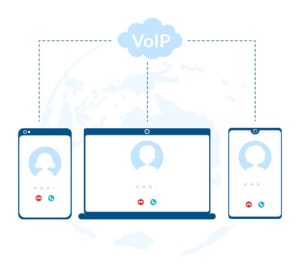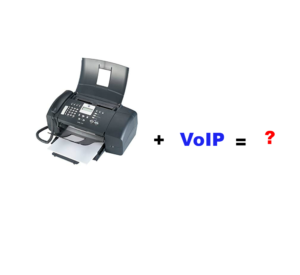Are you a business considering your options to adopt the Voice over Internet Protocol (VoIP) solution for your communication infrastructure? Or maybe you are already using a conventional method and wish to find a more efficient channel, i.e., SIP trunking.
Either way, you are in the right place, as this post will give you a complete insight into what “Session Initiation Protocol” or SIP is. Additionally, you will also get to learn how it can help your business master modern-day communications.
The Ultimate SIP Trunking Guide
Research studies in 2019 claimed that 45 percent of businesses of all types and sizes within the United States are now using SIP trunking as their main communication technology. The same research also predicted that this implementation ratio would increase in the time to come.
Many businesses stumble upon the SIP technology during their research. However, they hesitate to jump in because they simply do not understand the solution.
As a business, if only you knew what sets it apart and above from other communication solutions and how it works, you would definitely want to explore SIP trunking for once.
That is not the only reason; the benefits of this VoIP solution are limitless. SIP trunking will offer you efficiency in several areas such as time, energy, resources, human resources, and, most of all, costs. Therefore, let us dive right in and explain to you what SIP trunking is.
What is SIP Trunking?
The term SIP is an acronym for “Session Initiation Protocol.” This is a communication solution or technology (whichever way you prefer to call it) that allows you to communicate vocally over the Internet. However, you can use other communication services depending on your needs as well as the service provider you use.
The idea behind SIP trunking is to replace conventional communication methods and devices such as telephones. Thus, if you are a business wishing to deploy a trunking solution as your organization’s communication infrastructure, you can easily do so using it via PBX.
PBX or Private Branch Exchange is a traditional terminology used for a business telephone system. This communication mode required only two elements to work upon, i.e., lines and stations. Of course, you needed telephones to pick up, dial the number, and speak.
However, this was way before VoIP technology became mainstream. The carriers and businesses used Public Switched Telephone Network (PTSN) in those days.
On the other hand, if you wish to use it, you do not always need physical phone lines to connect. These are virtual phone lines that allow your business to make or receive voice or video calls using Internet service.
You can virtually make a call instantaneously worldwide using virtual phone numbers. The SIP trunking tech uses the Internet and carries your voice in digital packets to the receiver and vice versa.
Is SIP a Viable Solution for Businesses?
If you are an organization thinking about choosing SIP, you may ask, “why should I use SIP trunking when my existing system works fine?”
Well, the answer is pretty simple; today’s businesses do not simply thrive on what works. The key to success is in solutions that work efficiently in terms of time, energy, human resources, and, most importantly, money.
Moreover, not only do you get to save money, but SIP trunking also gives you access to a communication portal to make unlimited local, long-distance, and international calls. However, you simply have to spend an initial setup cost and pay a monthly charge to the service provider.
The charges may differ depending on the type of vendor you choose and features you wish to avail of based on your organization’s communication needs. You can really save a substantial amount, especially if your business deals with international operations. You know how expensive those overseas mobile and landline calls can be.
You can purchase multiple SIP channels and even use channels for on-demand provision. This allows you only to have access to and pay for the number of communication channels you use each month.
This is a flexible approach as you can limit your spending and grow your trunking infrastructure as your business continues to grow.
Some of the most innovative built-in features this technology can offer your business are:
- Network consolidation
- Multiple communication tools and solutions such as video, audio, instant messaging, and presence application integration.
Do Not Mistake SIP for a simple VoIP
You may think, this sounds like any other VoIP phone system; this is where you make a classic mistake of mixing the two. Yes, both trunking and VoIP use the Internet to make phone calls, but here is what sets them apart.
- VoIP can only use the Internet to make voice phone calls and nothing more.
- The trunking technology allows you to not only make voice phone calls, but you can integrate video into it as well. This is not all; you can also use SIP trunking to send other multimedia-based messages worldwide using your PC or mobile devices such as smartphones, iPad, and tablets.
Are there any limitations to SIP Trunking?
The only limitation to how you can use SIP trunk calling is your Internet bandwidth. Typically, every SIP trunk call utilizes 85 to 100 kbps of Internet bandwidth. Additionally, you must remember that the upload speed of the Internet services is mostly slower than the download.
Therefore, it is of utmost importance to gauge your organization’s communication needs, i.e., the call volumes you will be handling. This evaluation will help you get an Internet connection with an upload speed to facilitate your SIP trunk calls without any lag or breakdowns.
Understand the Infrastructure
When you deploy SIP trunking into your communication infrastructure, the architecture of the technology offers a “Session Border Controller (SBC).” The SBC works as a mediator that allows your existing phone system to connect with the trunking system.
Think of this as a central hub to manage, execute, and route all the calls. SBC is also responsible for transcoding incoming and outgoing voice codecs, i.e., the voice in digital packets exchanged during phone calls.
Additionally, it also manages numbering plans, call-routing policies, and the security of the entire communication architecture of your business.
You can also speak to your vendor about other additional services such as
- Features such as caller location information
- Routing of 911 calls and free emergency calls
- Toll-free numbers
- Encryption of your voice calls for security purpose
- Provisioning trunks using a web-based interface
- Connecting your on-premise phone with mobile phones. The trunking service provider will interconnect your architecture with the cellular networks allowing the calls made via cell phone to ring on a landline phone too.
- Toll fraud protection
- DoS or Denial-of-Service etc
The Key Features
The SIP trunking architecture uses virtual devices and dialer to make calls or for other communications. This means you can get rid of the heavy and old fashioned physical devices and associated hardware. No more physical phone lines, exchange boards, and the operator needed.
This helps you save cost on several fronts, such as hardware, workforce, repair, and maintenance. On the other hand, you also get to save as SIP calls cost way cheaper than traditional phone calls. Similarly, the call routing feature for international calls via SIP comes at inexpensive rates too.
How?
Because studies show that Internet data prices are decreasing compared to standard phone call charges, the latter has somewhat remained the same for years.
Moreover, having digital/virtual hardware allows you the flexibility to carry them wherever you go.
This is even more important in the current situation during the COVID-19 pandemic. As most businesses and employees have to work from remote locations, using trunking seems like a more feasible and possible option than a traditional communication means.
You can easily have a 1-on-1 or connect with multiple employees for a conference call such as team meets, reviews, training, and other important discussions. The promising part is, this is not only possible in case of a voice call, but you can even do video-based conference calls.
SIP trunking also protects your communication infrastructure from going down under any unforeseen circumstances.
For example, if your business location experiences bad weather, hurricane, fire, or other natural disasters, the virtual SIP trunking lines will remain operational.
Things to Consider When Shopping for A Trunking Solution
Once you start shopping around for the SIP trunking system, it is imperative to know what you are looking for. In order to help, here are certain aspects you must keep on top of your mind.
1. Security
Having a digital communication solution comes with its own set of challenges. The biggest threat you face over the Internet is being vulnerable to hacking, toll fraud, and other security breaches. Therefore, try to get a vendor onboard that offers state-of-the-art security protocols to safeguard your organization.
Ask the vendors if they offer built-in security features such as car barring, restricting access, blacklisting locations, numbers, and even countries. This allows you to control the incoming and outgoing call traffic making your SIP trunking even more efficient in performance and speed.
2. Checking its Reliability
One of the top-most priorities when researching for a SIP trunking system to buy is its reliability. You have to pick a vendor that can offer you uninterrupted connectivity no matter what. Do not be shy to ask the vendors about their contingency plans in case of network failures.
Similarly, ask them if they offer call rerouting features to make sure that your communication channels do not suffer due to high call volume, etc.
3. The Cost Factor
The basic brass tacks of any business decision is the money. The SIP trunk calling solution you can get your hands on depends on how much you are willing to invest. You can either pick a price plan based on your analysis of previous call records and how many calls you will be making during peak business hours and needs.
On the other hand, you can choose an SIP Trunking price plan where you pay a flat rate for all users irrespective of the call volume. Therefore, think carefully before choosing because the only right answer is to know your needs and choose a vendor offering you the best value for money.
Implementing Your Own SIP Trunking Architecture
Now comes the part where you learn about setting up SIP trunk architecture. This includes the following aspects:
Knowing Your Needs
First and foremost, you must evaluate your business needs including the following:
- Knowing how many calls you deal with on a monthly basis
- How many simultaneous connections you make, etc.
- Look at your previous month’s call records and know the answer to all of the above.
The same data will give you an insight into how many multiple connections instances your business experience. Plus, you also get to identify the peak trends of your usage and the strength of the Internet connectivity and bandwidth you will need for a flawless SIP trunking experience.
Initiating Setup
In order to set up your own system, you will need to configure it into your business’s entire communication network. For this purpose, you can connect the SIP trunking with your existing gateway such as a PBX, etc.
Additionally, you will also need to get a strong Internet connection to support your SIP trunk system.
Do you Need to Port Your Existing Numbers?
If you are a new business, you can get brand new numbers altogether. For existing businesses, you will have to choose whether to get new numbers or transfer your existing telephone numbers. This will come at a cost, so speak to your service provider and vendor before you agree to it.
Planning & Deploying Disaster Recovery
While you are setting up the SIP trunk architecture, do not forget to plan the disaster recovery protocols. This will allow your SIP calls to redirect automatically in case of any disruptions. For example, if you are unavailable to answer an office phone, the incoming call will reroute to your computer or smartphone, etc.
Executing & Testing
Do not rush into transferring your numbers just yet. It is always a good idea to test run the entire infrastructure for a while before going live for good.
This initial testing phase will help you weed-out any lags, bugs, and glitches in the system. These include connectivity issues, Internet LAN or WAN problems, firewall policies, security and encryption issues, etc.
Finalizing the Network
You have made the tweaks, and trunking seems to be working fine. Lock the settings; deploy the apt security protocols, set up user accounts and passwords, and you are all good to go.
Must-Have SIP Trunking Features
Now that you know what SIP is, things you must consider when buying, and how to execute the setup, it is time to learn about the most popular add-ons. Having these features can enhance your phone system into a unique solution for your organization.
However, speak to your vendor if they offer all of these features because some may not.
- Caller ID has been around for decades now and still comes in as a handy option. This saves you from a lot of hassles of answering unwanted calls from unknown numbers. As a business, you can set up your company’s name as a Caller ID. So every time you call a person or business partner, the caller ID displays your Business name instead of a phone number.
- You can ask the vendor to provide you multiple Direct Inward Dial (DID) options. This way, you are not bound to a specific location. The multiple DID allow you to de-couple your phone numbers from a specific location and use the local phone number of the market you are currently dealing with. For example, if you have a business in New York and want to run a call promotion in California, the DID option will display a California number when you ring a client or a customer.
- Voicemail is a common feature in any communication solution, so this may come by default. However, always confirm with your vendor.
- Ask the vendor if they offer remote access service with local numbers. This allows you and your employees to work from home or any location and still use the local number of your company’s location.
- CDR or Call Data Record service by the SIP trunk vendor will allow you to understand your usage and trends. You can use these analytics to enhance further or modify your existing trunking system for further efficiency.
- Did you know trunking supports toll-free numbers for businesses? If this is something for your company, ask the vendor if they can extend this feature to your trunking system.
- You can even integrate electronic emergency calling numbers into your SIP trunk calling solution. This is also known as “e-911” dialing this number will connect you to a local emergency service on their traditional phone number.
- Data Recovery is one of the most important features that can benefit your organization. Unforeseen emergencies such as bad weather, power outage, hurricanes, and lockdown may prevent you from coming to work. Thanks to trunking, you can still access your communication system from a remote location.
- Ask the vendor if they provide toll fraud prevention protocols, especially if you need to deal internationally. This feature allows you to recognize fake or suspicious callers. Moreover, you can also opt to suspend the international calling feature to prevent fraudulent attempts on your business.
Other Benefits of Using SIP Trunking
Here is a summary of the benefits of using a SIP trunking system instead of any other traditional ISDN-based communication solution.
1. Cost-Effectiveness
SIP Trunking prices are very reasonable and it offers significant savings, such as the cost of hardware and manpower. Additionally, VoIP connections are cheaper than traditional calling rates. Now there is no need to use landlines and cellular networks and pay massive bills for your local, international, and long-distance calls.
2. Customization
If you are about expanding your business to multiple locations, trunking is an ideal communication strategy. It can help facilitate your business growth, and the best part is that there is no set formula to it. You can actually customize the solution as per your business needs and budget.
Additionally, if you are relocating your business, it allows you to take your old numbers with you. This is very important if you are a business that primarily relies on telephonic commutations for sales, promotions, and other business operations such as retail, insurance companies, telemarketing, etc.
3. 24/7 Connectivity
Whether you are at work, home, traveling, or stuck on the road, now you can stay connected to your business 24/7, 7 days a week. All you need is a reliable Internet connection to run your trunking system flawlessly.
That said, in order to make the most of this solution, you have to ensure that you get the best Internet connection for maximum call quality and data transference. For this, you may have to speak with your Internet Service Provider (ISP) to offer a connection dedicated to VoIP communications.
4. Serves All Sectors
Whether you are a business, a school, or a work from home entrepreneur, SIP trunking can help everyone equally. No matter which industry you belong to and what is the size of your organization, the solution is flexible enough to serve all.
If you are a business suffering due to lack of effective communication means during the present COVID-19 pandemic, SIP trunking seems like an ideal savior. Yes, there will be obstacles such as initial cost and monthly charges, but you will save a lot by implementing a SIP trunking solution.
Do not let the poor call quality over a VoIP and expensive call rates hinder your growth potential. Trunking will help your organization enhance its productivity and create a more transparent, flexible, and strong communication network internally and externally.
Conclusion
If you are a business struggling with poor call qualities on VoIP, expensive costs for repair, maintenance, downtime, and call rates, SIP trunking is the answer. From cheaper rates to better call quality, audio/video calls to other multimedia communication tools, SIP trunking can take care of it all.
It is undoubtedly a one-stop-shop to cater to all business communication needs. All you need to do is do some homework while researching the right SIP trunking solution vendor and negotiate the terms that serve your business well in terms of efficiency for performance and money.

![What is PBX? [Private Branch Exchange]](https://www.youreviewit.com/wp-content/uploads/2022/05/Cloud-PBX-Diagram-300x275.png)




